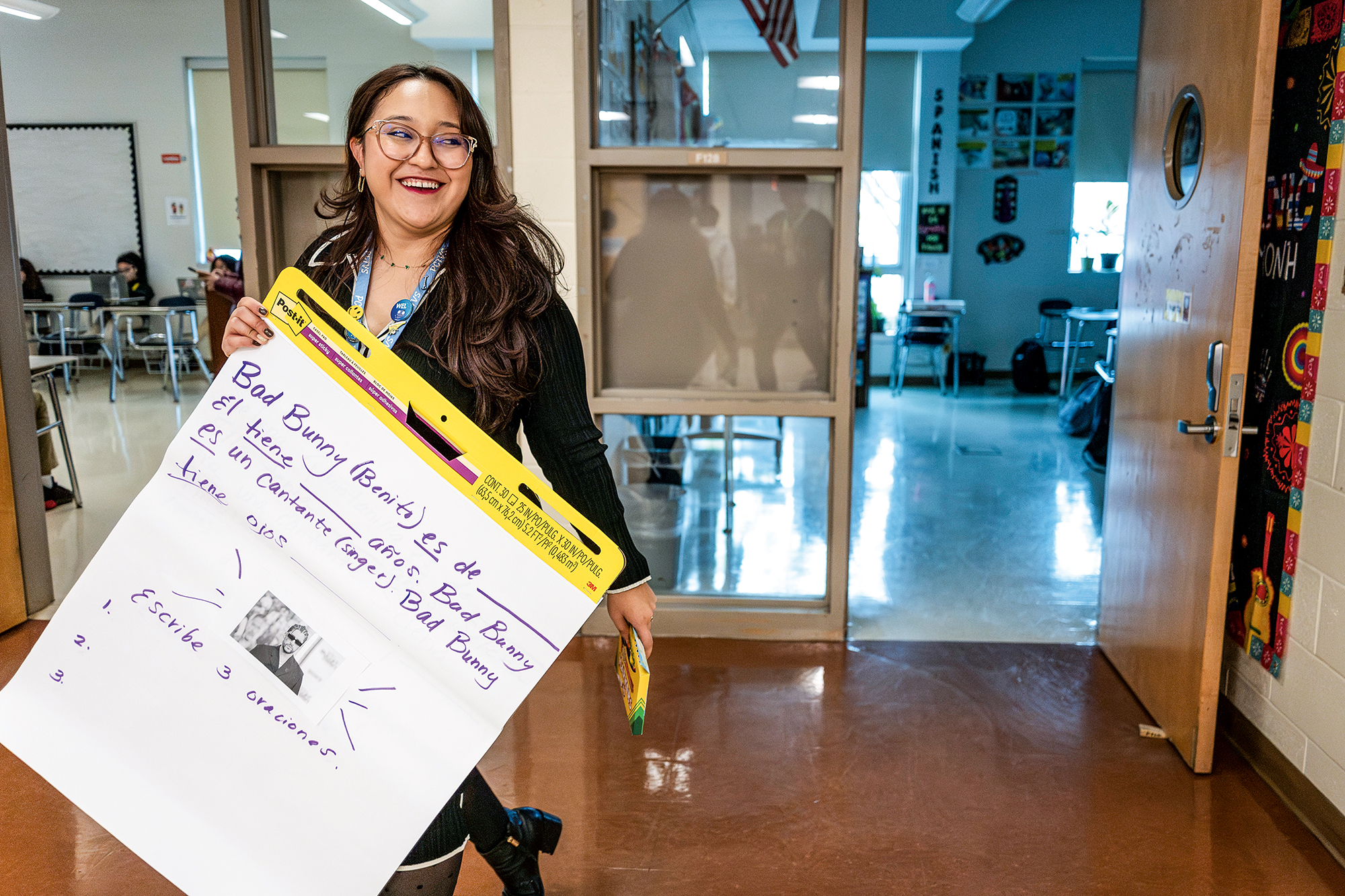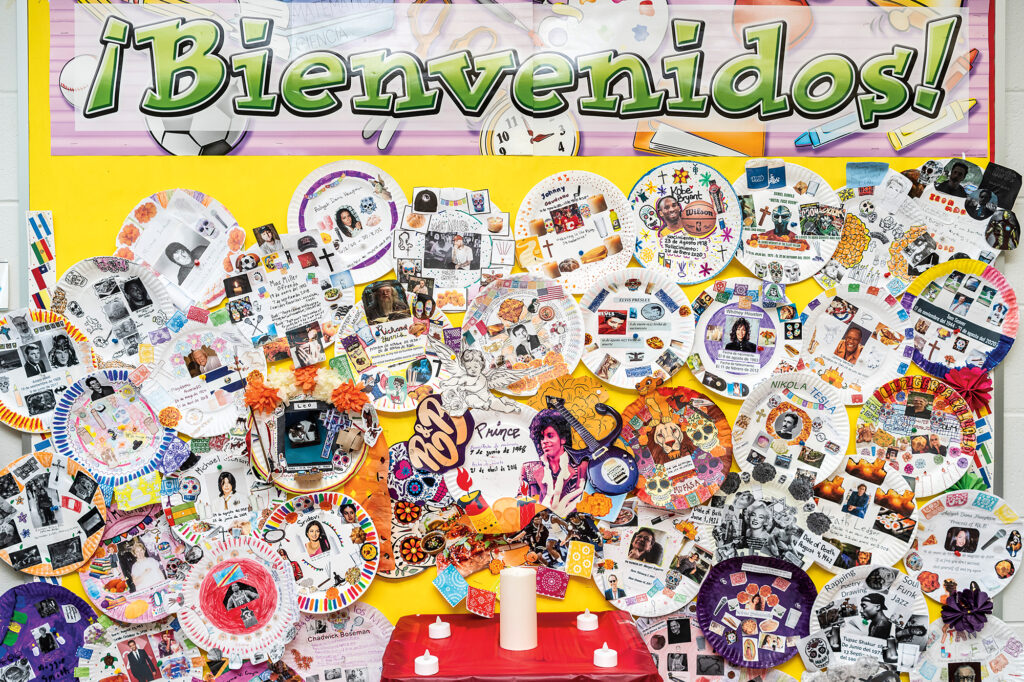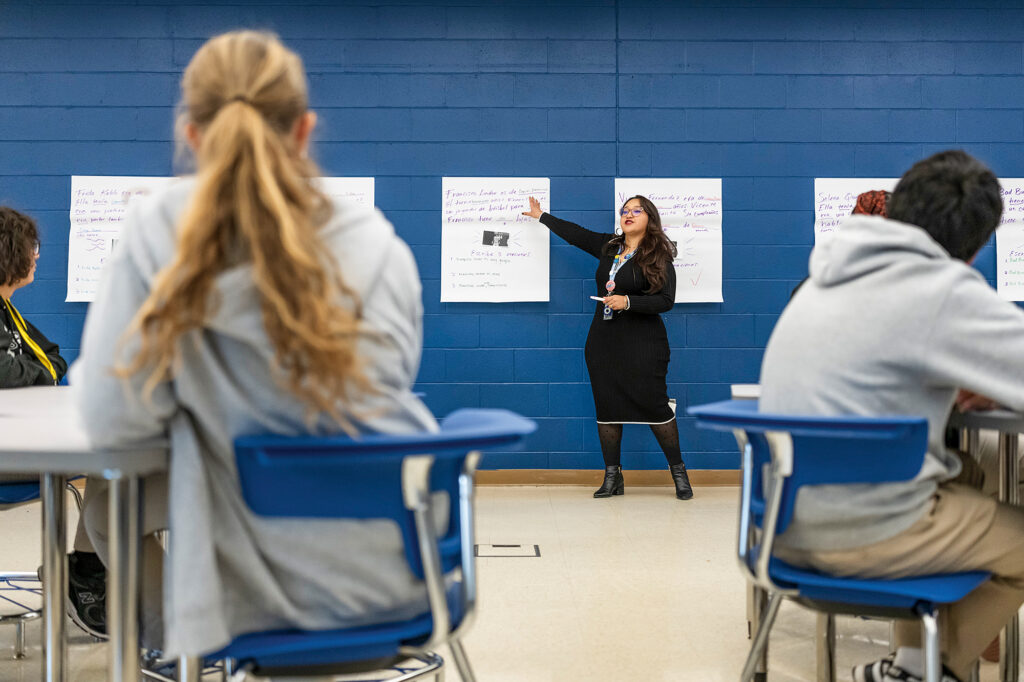Cultural Creativity

Veronica Chavez-Cortez is in her third year of teaching at Passaic County Technical Institute in Wayne, N.J. (Photo: Karsten Moran)
By Rebecca Maxon
Designing engaging lesson plans can be quite challenging.
“Creativity is the key to student engagement,” says Veronica Chavez Cortez, BA’19, MA’20 (Metro), who teaches Spanish I and AP Spanish classes. “A lot about teaching is also learning.”
In her third year at Passaic County Technical Institute in Wayne, N.J., she’s learning how to make her curriculum dynamic.

Photo: Karsten Moran
“AP Spanish is a serious class and entails a lot of test prep, but it’s been fun trying to be a little creative,” says Chavez Cortez. “The key to preparing them for the exam is teaching them to think creatively on the spot.”
In her Spanish I class, she likes “using a lot of visuals like pictures and short videos about culture to grab their attention.” Her students particularly respond to TikTok videos.
“Recently, I used a short Disney clip, ‘Bao,’ to discuss family dynamics in Hispanic culture.” Students related to the topic as they discussed how those dynamics may differ from their own experiences.
Playing Spanish music in her classroom also brings her students together. “Whenever they’re doing independent or quiet work, I try to play a mix of music styles. Right now, everybody’s into Merengue, Bachata and Reggaeton.”

Photo: Karsten Moran
One of her favorite assignments introduces the AP students to traditional art. Students research the art of different countries and cultures, then present their findings.
“They also make physical Christmas ornaments, based on the style of art that they chose to present.” Their inspiration can come from clothing, a cultural artifact or a specific kind of indigenous art. In this project, says Chavez Cortez, students learn about new types of art, of course, but they’re also challenged to change their perceptions of what art can be. “Things we see every day count as art,” she says.
She also takes inspiration from her classes and her current program, the master’s in educational leadership.
For instance, she uses fables in the classroom. She studied short stories and children’s books in Effective Reading Instruction at FDU. “In the AP class, I focus on cultural legends, to explore the morals and values of the cultures they originate from.”
In Spanish I, Chavez Cortez uses fairy tales translated into Spanish, accompanied by images — and even some acting — to get students engaged. “Students are already familiar with the stories, and it helps them to follow the lesson better and be more creative.”
In both approaches, “The students have made great connections,” she says. “It’s nice to see them get excited. It gets me excited about what I do.”